 Florence crowds Florence crowds In 2017, over 50 million tourists stayed in Italian hotels--and ONLY during June, July and August, the supposed "high season". But in the last decade, the "high season" has been expanding to early spring and as late as October, and most visitors to Italy don't stay in hotels... How many more visitors stayed in rental apartments or with friends or relatives? How many camped or stayed in hostels or local B&Bs? Keep in mind, the population of Italy is only around 60 million (a decent number for such a small country), but some estimates put the number of actual tourists from all over the world visiting Italy at over 420 million in 2017 alone. Just imagine if the U.S. matched or even surpassed its own 320 million population with half a billion tourists a year?! The actual current number of tourists visiting the U.S. annually is a mere 80 million. It seems Italy is being over-promoted, overbooked and over-run by tourists. As an example, just look at what happens to Venice during the summer months when as many as 6 cruise ships each day dump (according to recent numbers) over 32,000 people onto the fragile jewels of its sinking islands. Over 600 cruise ships a year make daily stops in Venice! The influx has become so bad the city is being gentrified, with mom and pop shops turning into tacky gift shops selling things made in China, and with local residents moving out when they realize their homes are worth more as holiday rentals. Is it time to give Italy a bit of a rest from the wear and tear on its tourist hotspots... Venice, Florence, Pisa, Rome? Are these "must see" destinations turning into Italian Euro-Disney spots, lacking authenticity and losing their cultural heritage? We propose that when Italy opens up again as this pandemic dies down, Americans should visit a small town in Italy where the real Italian lifestyle can be experienced, instead of putting up with indignities of enormous, shoulder-to-shoulder crowds, pushing, shoving and tight schedules of the "must see" locations. If you are traveling with kids, this should be an important consideration. Children can have a much more enjoyable time if you slow it down and toss out the schedule. There are tons of things to do with kids all across Italy... water parks, go-karts, dinosaurs, science museums, beaches, cycling, hiking and more. How about Monte Isola, a town on Lake Iseo in Lombardy? Or visit the mountain village of Castelluccio in Umbria for a taste of small town, mountain life. Instead of Florence, visit Pienza, one of the most beautiful Renaissance villages in Tuscany. And instead of paying high fees to have a spa day, go where the locals go for free, to Bagno San Fillipo in southern Tuscany and bath in the hot, natural sulfur springs under huge mineral waterfalls frozen in time. And the Cilento is much less crowded (aside from August when Italians flock to its beaches for their Ferrragosto holiday) that the Amalfi Coast and has lime after mile of real sand beaches. And don't forget Puglia, especially the tip of the boot around the port town of Brindisi. Puglia isn't like any other part of Italy and nearly every town has something unique to offer. For amazing beaches, take a plane or ferry over to Sardinia. Its natural wonders are unspoiled, with the sea as clear as tap water. So reconsider when booking your next visit to Italy. Throw away the must-see list and visit the real Italy. Slow down, relax and spend time in one location and area at a time. Find out what days the local market is open. Rent a house or apartment and do your own cooking with amazing, fresh ingredients. Meet the locals. Learn the local dialect... even if just a few words. Keep in mind that Italy isn't one thing... it's not just Rome, Florence, Pisa and Venice. There are 20 independent regions in Italy, each with its own language, cuisine, customs and culture. You can literally throw a dart at a map of Italy and then plan a trip to the region the dart lands on. Trust me. Italy is a lot more than standing on line for hours just to be rushed through the Sistine Chapel in five minutes, with throngs of tour groups shoving you from behind.
Learn to live the Italian lifestyle while you are in Italy, and I guarantee you'll have learned how to life a bit of that same lifestyle when you're back home. Ciao e buon viaggio. --Jerry Finzi As the World Health Organization claimed, "This is not a drill". Italy is the fourth highest country affected by the outbreak of the COVID-19 coronavirus with its tourist industry taking a huge plunge. Tourism accounts for 13.3% of the Italian economy. Within the last 24 hours, Italy has reported 41 new deaths from the coronavirus. This brings the number of fatalities in Italy 148. The number of cases also jumped to a new high of 769, reaching 3,858 over the past two weeks. To illustrate how Italy is being impacted:
 The word for Hospital is Ospedale The word for Hospital is Ospedale Should you travel to Italy right now? If you are over 60 years old and have underlying health issues -- no. Why take the chance? If you are younger and healthy, you might have the experience that many rarely have--Italy's "must see" sights without crowds. If you are traveling to Southern Italy, you just might have made the safest choice. Still, stay safe, wash hands often for at least 20 seconds with hot water and soap; don't shake hands of embrace or kiss anyone; if you cough or sneeze, do it into your arm; try not touching your face after touching railings, doorknobs or elevator buttons; avoid public transportation; avoid crowded areas; if you become sick while in Italy, remember, they actually have a fantastic health care system--find a doctor or hospital. Resta in salute, amici. --Jerry Finzi  Before traveling to Italy, I researched about all sorts of things, and especially (to protect my little family) how people scam and cheat and how to avoid scams. There are lots of warnings online about taxi cheats. I just wanted to report that after having used car services, radio taxis, taxis from a taxi station and even hailing a taxi who had his roof light on (libero)--something that is not normally done successfully--we have not been cheated. Taxis from The Airport to Your Hotel If you've just arrived at the airport and want a taxi to take you to your hotel in Rome, how do you know what a proper charge is? Simple. It's written right on the side of the taxis waiting at the taxi stand at the airport! The fares will be listed for each airport (Fiumicino or Ciampino) for one direction. No tips... flat fee... taking you inside the city walls. Taking a Metered Taxi For the most part, you hire a taxi at a taxi stand, where you normally find many taxis lined up waiting for new fares. Just walk to the first taxi at the head of the line and get in. Taxis in large cities usually have an official emblem on the side of their car. In Rome, it looks like this... And as you can see by the second photo above of a taxi station sign, rates are also posted there. When entering a taxi, always look at the meter for the "Tarrifa 1" to be lit up. Within the city walls "Tarrifa 1" is the correct lower rate. If you see "Tarrifa 2" or "Tarrifa 3" lit up for a trip inside the city limits of Rome, beware... you've got a crook trying to double or triple the rate. Tarrifa 2 and 3 are used for only outside the walls, into the suburbs or to the airport. Radio Taxi This is one of the easier ways to get around in Rome, especially since the city subway lines are very limited. (They've been trying to expand the Rome subways, but every time they dig, they have to stop for the archaeologists to record ancient discoveries). The Rome city council’s number to call a taxi is +39 060609. You have to learn to speak at least a limited bit of Italian to order a taxi--giving the address properly in Italian, for example. Learn how to pronounce numbers, names, and letters too, so you can spell a name. Here is a link to a great three-part lesson on pronouncing the Italian alphabet. And here is a link to pronounce numbers. You can also call +39 06 3570, or send an SMS to +39 366 673 0000, the SMS text should just have your current address. You will receive a request confirmation SMS and few seconds later another SMS indicating that a taxi is on it’s way. The radio taxis always show up on time with the help of their sophisticated gps unit. The MyTaxi service is one of the largest, most reputable taxi services in Rome. In fact, to make things easier, you can use the MyTaxi app to call a cab. Transfer (Car) Services Simply put, "transfer services" refers to a car, limo or van service that can arrange to pick you up at one location and transfer you to another. Many offer group rates (for vans) or private drivers just for you. You can arrange pickups well ahead of your arrival in Italy. They also offer tour services--to take you on a day-long tour of the Amalfi Coast Road, for example... stopping anywhere you'd like to take photos or have lunch. Typically, car transfer services cost barely more than a city taxi and have very professional drivers that also speak English. There are many reputable services in most large Italian cities that can pick you up at a specific time to take you from airport to your hotel/rental, or to pick up up at train stations, and also to take you from one city to another. Click to see a list of reputable transfer services in Italy. Hailing a Taxi In large Italian cities with a large number of taxis, you don't hail cabs. If you do see a taxi with its roof light lit, that means it's unoccupied. You can, of course, try hailing the cab... as long as you are standing where they can pull over without blocking traffic (in other words, not on a narrow side street). There was one time I tried hailing a taxi on a crowded side street (with barely any sidewalks, a common thing in Italy). The driver looked at me like I was crazy. With good reason... he had no legal place to pull over. Lesson learned. Only try hailing a taxi in Rome or Florence if there is room for them to pull over to the curbside to pick you up--a wide boulevard. Tipping No, you don't have to tip taxi drivers in Italy like you would in Manhattan. If you want to tip, the tradition used is "rounding up". For instance, telling them to keep the change when you hand over €10 for a €9.50 fare. However, if the driver is extremely helpful, with large heavy bags for instance, a €1 or €2 tip perfectly fine. The phrase to use is tenga il resto (keep the change). Uber in Italy At this writing, Uber is only available in Rome and Milan, but only as Uber Black, which means you will get much nicer vehicles, but at higher rates. You can still use your Uber app in Italy. In Italy, permits (meaning government fees) are required for just about anything you want to do to make money--pizzeria, tour guide, making cheese, and driving people to their destinations. Rome and other Italian cities require drivers to register as an NCC driver with a NCC medallion, which involves a registration fee, exams, a special license and a medallion to place on your car. Even the car has to be approved. It can cost up to €100,000 for a medallion. So, even though Uber is an option in Milan and Rome, it's more expensive and has less availability that other options. Useful Phrases Quant'è la tariffa? or simply, Quanto costa? (What is the fare?) Quanto extra per il bagaglio? (How much extra for the luggage?) Puoi abbassare la musica, per favore? ("Can you turn down the music, please?") Puoi prendere il percorso più veloce? ("Can you take the fastest route?") Puoi guidare attraverso alcuni bei siti sulla strada per l'hotel/appartamento? ("Can you drive by some beautiful sites on the way to the hotel/apartment?") Ecco l'indirizzo della mia destinazione. (Handing the driver the written address) ("Here is the destination's address". Write the address down on paper ahead of time). Puoi accendere il condizionatore d'aria? (Can you turn on the air conditioning?) In general, I've found Italian taxi drivers to be talkative, friendly, helpful and responsive when you at least try to speak some Italian. I'm sure they are used to tourists who don't attempt even the most basic Italian words and expressions. Taxis are also a lot safer than taking very crowded buses in the height of the tourists season, when pickpockets work the buses all day long. Looking back, I wish I had taken photos of the drivers... I still remember their faces and smiles. By the way, unlike in Manhattan, every taxi driver was actually an Italian. Imagine that! --Jerry Finzi Copyright Jerry Finzi/GrandVoyageItaly.com - All Rights Reserved
Not to be published without expressed permission One of the biggest fears of people when planning their first Voyage to Italy is getting
pick-pocketed. We went through the same fears and read many horror stories that are posted around the Web on travel forums. But the reality is, if you are used to traveling around any big city or crowded event, you are probably ready for Italy with the single most effective best tip: Stay Aware, but there are a few tips we can offer... When staying in a hotel, B&B or agriturismo in Italy, ask for a business card of your lodgings, write the dates of your stay ton the card, then stick it in a prominent place in your wallet. Example of how this can help: someone drops his wallet in a parking garage; someone later picks it up and returns it to the manager; the manager sees the card and calls the hotel; the hotel contacts the guest. Wallet successfully recovered! If you have an agenda that puts you in Venice on day 1-4, then Florence days 5-8, and Rome from 9-10, write up your agenda on a small card and place this in your wallet (maybe a card like this in each piece of luggage, too). List the hotels/apartment managers, dates and phone numbers. Print it in small sized fonts to fit a standard Avery business card template, and put a title in both English and Italian on top, such as : "If you find my wallet, here's where I will be: Se trovate il mio portafoglio, ecco dove sarò:". If you are using a smart phone in Italy, be sure to include your cell number. As a preventive measure, try to not keep your credit card or ATM card in your wallet. I used a leg wallet that fit comfortably on my calf to hold our passports and extra credit cards--even some extra cash for the day. I tested a money belt, but couldn't stand the feel of it placed under my belt-line. Women can use a bra card pouch. In general, don't carry too much cash at one time. I tended to get cash only when I needed to replenish our 2-3 day supply. I'd hold what I needed in my pocket and the balance would go into my leg wallet. You might also consider opening a new bank account with a limited amount of funds you will need for your trip. We did this and got a debit/credit card with the account. In this way, your normal savings and checking funds can't be accessed in case of a lost card. And by all means, get a card for you and your spouse and if necessary, for your responsible teen (for the rare event of them being separated from you--and on another subject, make certain your children have phones to contact you). I also bought a new, slim wallet to keep my pocket money in. These thinner wallets make less of a bulge in men's pants. I would also suggest that men keep their wallets in their front pocket. Most rear pocket wallet pickpockets slash the wallet bulge with a razor and are gone before you know it's gone. In crowds, keep a hand tucked in the pocket so you can stay in touch with your wallet (literally). For women, get a anti-theft travel bag. These have steel cables in the straps that can't be cut. Their fabrics are also resistant to razor slashes. The pocket should have a flap over a zipper, and many offer have locks. In general, just be aware of your surroundings. If it doesn't feel safe, it might not be. If it feels safe, it still might not be. Trust your judgement. Be careful in crowds... crowded museum shops, buses, train stations, or lines leading into the more popular tourist sites. For example, even though it's an operational church, the Pantheon posts signs warning of pickpockets, and the lines can be long and a crush of people leading into the Colosseum, the Vatican or the Uffizi in Florence (and some in line with you might have intentions other than going where you are going.) Traveling can be tiresome and hectic. There will be times your logic and preservation instinct are sidelined and replaced with fatigue, excitement, confusion or even sheer amazement about what you are experiencing. Don't let your guard down, keep your wits about you and things will be fine. Think smart. Stay safe! --Jerry Finzi Cyclists already know Lake Garda as a premier cycling destination, but the design and installation of a cycle path that hangs from the craggy cliffs surrounding the lake is going to be a real game changer. At a projected cost of over $130 million, Garda in Bici (Garda by Bike) is being constructed nearly 200 feet above the lake to complete an 86 mile route that circumnavigates the lake. The first three-mile section is set to open this summer, and the entire course should be completed by 2021 which will connect three Italian regions: Lombardy, Veneto and Trento. The area surrounding Lake Garda is already popular with cyclists who ride off-road trails in the Dolomites and with the grueling TransAlp Bike Race. 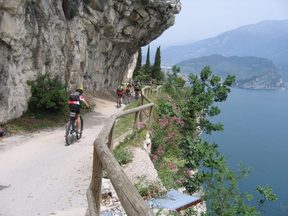 The sleek steel and wooden route features elegant iron fences built as futuristic balconies with views of mountain peaks, boats sailing by and the picturesque villages that dot Lake Garda's shores. The engineering to complete the installation itself is daunting, at times using using helicopters, mountaineering experts and specialist riggers drilling into solid stone. Thick steel poles drilled into the cliffs support the board treadway, seemingly defying gravity. The addition of this amazing structure to the many biking paths that already exist around Lake Garda makes this a must-cycle destination. Update, 6/20/19: As the video below shows, the "bike" path is also frequented by pedestrians and is becoming a bit over-crowded, as most popular sites in Italy... For more information about cycling in Lake Garda, Click Here. --GVI  Altamura is primarily known for its world famous crusty bread that lasts for weeks, but man doesn't live by bread alone. An occasional musical interlude helps, too... The Teatro Mercadante of Altamura began a new history in the Pugliese city in 2014 after 25 years of closure, thanks to the patronage by Altamura entrepreneurs. The beautifully restored classical Italian theater hosts a mixture of opera, jazz, classical comedies, Avant-garde performances, modern plays and philharmonic concerts. The theater is named after one of Altamura's favorite sons, Giuseppe Saverio Raffaele Mercadante (1795 -1870), an Italian composer, particularly of operas. After his death in 1870, the city of Altamura decided to build a new theater to honor his memory, starting construction in 1895 and finishing (amazingly) within six months! Originally, each person contributing to the effort, paid at least 5 lira which would represent "ownership" of the stage, a lamp, a door or a chair proportional to the amount paid. The interior of the theater is horseshoe shaped, consisting of four tiers of boxes and stalls with a capacity of approximately 500 seats, which results in there being no bad seat in the house. The historic curtain, entitled Mirabile, is the work of the painter Montagano, depicting Frederick II of Swabia and the construction of the Altamura Duomo. While Mercadante may not have retained the international celebrity of Gaetano Donizetti or Gioachino Rossini beyond his own lifetime, he composed as impressive a number of works. His development of operatic structures, melodic styles and orchestration contributed significantly to the foundations upon which Giuseppe Verdi built his dramatic technique.
Attending a play or concert in this wonderful Italian theater would be an experience that will add eternal memories to your Voyage to Puglia and Altamura... --Jerry Finzi  Pulpit by Pisano Pulpit by Pisano The Duomo The Leaning Tower of Pisa sits in the sprawling Piazza dei Miracoli, but there are also other amazing buildings to visit and admire. Construction on the Pisa Duomo (the Santa Maria Assunta cathedral) began in 1063 by the architect Buscheto, paid for with the spoils received fighting against the Muslims in Sicily. The structure is a mix of architectural styles, reflecting the influences of the varied merchants of the day: classical, Lombard-Emilian, Byzantine, and Islamic. The church was erected outside Pisa's defensive walls to show it's lack of fear from outside forces. The cathedral was consecrated in 1118 by Pope Gelasius II, a member of the powerful Caetani family with links to both Pisa and Rome. The Duomo is well worth a visit and contains noteworthy treasures, including the marble pulpit and bronze doors, both designed by Pisano.  The Baptistry The construction of the Baptistery of St. John (Battistero di San Giovanni) began in 1152 to replace an older baptistery, and was completed in 1363. The baptistry was designed by Diotisalvi, whose signature is found on two pillars inside the building, dated 1153. It is the largest baptistry in Italy, constructed with marble: 55 meters high with a diameter of 34 meters. It's architectural style is a combination of Romanesque and Gothic--the lower section Romanesque, the upper section Gothic. The interior, although somewhat overwhelming, lacks decoration. The octagonal font in the center was created in 1246 by Guido Bigarelli da Como, the bronze sculpture of St. John the Baptist is by Italo Griselli, The pulpit is from 1255-1260 by Nicola Pisano, father of Giovanni Pisano, who produced the pulpit in the Duomo. A little known fact: like the famous Leaning Tower, the Baptistry is also leaning, albeit just a tad 0.6 degrees toward the cathedral. One of the more interesting aspects of the Baptistry is its acoustics, illustrated in the video below...  Campo Santo Built in the 13th century, the Campo Santo (Holy Field) Monumentale is a cemetery built in the form of a cloisters, sitting alongside both the Baptistry and the Duomo in the Piazza dei Miracoli. Admittedly, it is the lesser-known of Pisa's monuments. Legend claims it was built upon a shipload of sacred soil from Calvary where Jesus was crucified. It is said that bodies buried here will rot and ascend to Heaven in just 24 hours. The burial ground lies over the ruins of the original baptistery of the church of Santa Reparata, a church that stood where the Duomo stands today.  photo by Finzi photo by Finzi Over the centuries, the most illustrious citizens of Pisa have been buried in Roman sarcophagi and more modest graves. The walls were decorated with 14th and 15th century beautiful frescoes which were damaged during WWII air raids, and are still being restored today. Some of the best frescoes to see include the Triumph of Death, the Last Judgment, and Stories of the Anchorites. The cemetery itself is composed of three chapels: Chapel Ammannati is the oldest one; Chapel Aulla made by Giovanni della Robbia in 1518; and Chapel Dal Pozzo, which was commissioned by Carlo Antonio Dal Pozzo, the archbishop of Pisa, in 1594.  Lion's Gate Lion's Gate The Jewish Cemetery of Pisa Just to the left of the Porta Nuova entrance to Piazza dei Miracoli, and just beyond the ancient gates of Porta del Leone lies the Cimitero Ebraico, the historic Jewish Cemetery of Pisa, one of the oldest cemeteries in the world still in use. It is separated from Campo Santo itself by the medieval walls, framed by the Torre di Santa Maria, the Lion's Gate and Torre di Catallo. If it weren't for the walls separating the two cemeteries, visitors would instantly realize that fully two-thirds of the northern boundary of Piazza dei Miracoli is sacred burial grounds for two religions. In use since 1674, the current cemetery was preceded by at least three other Jewish cemeteries, all located outside the western walls of Pisa. The first official mention of the Jewish community in Pisa dates back to 859 AD, and thirteenth century engraved inscriptions can still be seen to the right of the Porta Nuova. Historians believe that the poorest people were buried at the foot of the walls with their names engraved on the wall, all at the same height. Tombstones in the cemetery are unusual in that they have Hebraic inscriptions on one side and Spanish or Portuguese inscriptions on the other. This is because they were descendants of families expelled from the Iberian Peninsula in the 15th century. They also are engraved with the date from the the Gregorian calendar and and the Hebraic date. Many tombs are broken or tilted, not unlike the Leaning Tower, because of the poor soil. In the older part of the cemetery, the stones are under tall trees, giving you the impression that you are well outside of the city limits and away from the tourist throngs. Another interesting aspect is the tombstones marking the graves of children who succumbed to the 17th century plague. You will also find the graves of Jewish soldiers who fell during the First World War, Jews who were victims of fascist violence, German killings and Nazi-Fascist persecutions. A plaque on the wall of the mortuary chapel in the center of the cemetery lists names of those who were deported and disappeared in the extermination camps are also remembered by a plaque on the wall of the mortuary chapel in the center of the cemetery. As many of you know, it is Jewish tradition to place small stones on the graves of the departed, and you will find many stones in this cemetery as well. Some say the reason is stones last forever, while flowers would fade away--the love for people who have passed on never fades. Others say the stones help hold part of their souls down to Earth, where we can still spend time with those who have left this world. As in the words to a popular song, the Kotel: “There are men with hearts of stone, and stones with the hearts of men.” If you visit, leave some stones for their souls and for your own. To visit, contact the Jewish Community of Pisa. Via Palestro, 24 - 56127 - Pisa - Tel and Fax: 050/542580  Piazza delle Vettovaglie In the historic center of Pisa, Piazza delle Vettovagia's name describes its function... vettovaglie means provisions in Italian. Literally, its name means Supply Square. Unlike other town markets in Italy, which have only one day in which a piazza turns into a market, this Piazza becomes a local market each and every morning. Keep in mind, this is a market for where locals shop. Well worth a visit if you want to experience the real Pisa. Residents can buy fruit, vegetables and other food products. You will feel like you've been transported back to the Renaissance, surrounded on all sides by porticoes, the piazza boasting cafes, wine shops, butchers, fish-sellers, bakeries and spice shops. The Piazza is a great place to buy your provisions for the day, or for snacking or dining in a taverna under the portico. It is a particularly lively spot in the evenings where locals congregate, and because it is off the tourist radar, prices are more affordable.  Torre di Santa Maria and the Medieval Walls of Pisa The Torre di Santa Maria is in the north-west side of the defensive city walls in the Piazza dei Miracoli and was constructed in 1155-1161. In 1499, during a siege by the Florentines, the tower was nearly destroyed and shortened to the level of the walls. It was reconstructed again in the 19th century. The walls themselves took nearly two centuries to complete, stretching nearly 4-1/2 miles with an average height of 36 feet, about 6 feet thick and are built using “Panchina” stone, a form of tufa stone. After years of restoration, visitors may now attend walking tours on the Pisa walls on selected days. The three-kilometer path affords views of towers and ramparts, where you’ll also walk over the city's four gates: Porta Nuova in Piazza dei Miracoli, Porta a Lucca, Porta San Zeno and Porta Calcesana. Generally speaking, the walls are open from April till September. At the time of this writing, the cost is 3 Euros. Parts of the walls are actually handicapped-accessible via elevators (for short sections of the ramparts). You should be able to by tickets at the same places you buy tickets for the Leaning Tower. The hours are usually from 11am-2pm and 3pm to 8pm. (Please check with the Pisa Tourism Bureau for current dates and times. This is Italy, after all). Click the map above to see it in high resolution.
No, the photo above was not take in Venice. It's Las Vegas--the Venetian Hotel and Casino. This photo has actually been mistakenly used to represent the real Venice in at least one well known article. It's all stage set, plastic, and chlorine treated pool blue water. “We are not going to build a ‘faux’ Venice,” said Sheldon Adelson, when he first announced plans for his Venetian resort and casino. “We’re going to build what is essentially the real Venice.” Really? 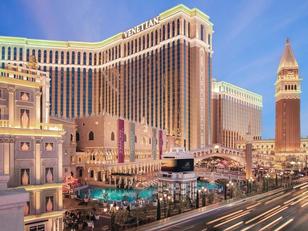 I mean, sure, the London Bridge has been in Lake Havasu City, Arizona since 1964... but it's the actual London Bridge, bought and paid for from England, stone by stone, rebuilt into a modern little town spanning a small man-made lake. But this "real Venice" in Vegas in the middle of Sin-City is all smoke and mirrors--plastic ones at that. Many who have been to the real Venice would tell Mr. Adelson, “You didn’t get the smell right”, (a compliment to Venezia). Venezia is real. It's history. It's gritty and more than just a little wet during the winter. You can get lost in its back streets in proximity and in time. Vegas is Vegas. It's for gamblers and posers or worse. It for shoppers looking for designer labels or tourist kitsch. It's a casino, a huge hotel and a shopping mall. It's for the lazy tourist. It's not for real Voyagers. In this Phony-Baloney Venice, a visitor can pull into the Doge’s Palace driveway and in one glance see St. Mark’s Square with its campanile, the twin columns topped by Saint Theodore and the winged lion of St. Marks, the Campanile, the Sansoviniana Library, the Ca’ d’Oro palace, and both the Bridge of Sighs and the Rialto. There are no driveways in the real Venezia. The Palazzo Ducale (the Doge's real name) has gondola slips just outside in the canal--no driveway. In the Vegas's Venetian Hotel, the gondoliers have to actually audition as singers and hired as entertainers. This is the primary concern when hiring a phoney-gondolier. In the real Venezia, gondoliers follow a 900 year tradition of fathers to sons (and recently, daughters), essentially being born into the profession. They have to take strict boating exams and are expert in both navigation and weather. Although some are know to have good singing voices, it's not a requirement to get a gondolier's license. In Vegas, their gondo-tainers wear walkie-talkies, boom microphones and perform on a schedule. In the real Venice, one has to wander, explore, take a gondola or water-taxi perhaps to other islands in the lagoon, or walk the back streets and canals to see all the mysteries and wonders the ancient city offers the real Voyager. That's what real Voyages are... a slow, purposeful exploration. Soaking in the light and smells and colors and tastes and sounds and textures of the environment. There's nothing phony about Italy or Venice. We suggest turning your back on places like these re-created phony vacation spots, including all things Disney, unless you have 4-7 year old kids. And even then, wouldn't you rather have your child experience walking in real dinosaur prints (yes, in Italy), seeing where real cavemen lived (Italy again), exploring real castles (everywhere in Italy), looking into the crater of a real volcano (Italy), seeing where real gladiators fought to their deaths (yep, Italy) and experiencing real snow-capped mountains (of course, in Italy)? And don't get us started on the authenticity of the food and the people... OK, and don't forget gelato for the kids. Come on... get real and get to the real Italy. --GVI  Castello Scaligero in the commune of Sirmione sits on a thin peninsula jutting out into the southern end of Lake Garda. Essentially, the ramparts of the castle function as a small fortified harbor for what was the Scaligera fleet. The castle has a de facto moat (the surrounding lake) and even a drawbridge through which visitors enter. There are 146 steps which take you up to ramparts of the walls which look down upon the little harbor. There is a small walkway around which bowmen would be stationed to ward off any intruders from the lake in addition to defensive towers. Castello Scaligero is perhaps the best preserved castle from medieval times in Italy, constructed in the middle of the 13th century on top of the remains of an ancient Roman fortress. Taking over a century to build, two courtyards and an other fortifications were also added. In 1405 the Republic of Venice took control and strengthened the castle even further.  If you decide to visit, consider that in high season Lake Garda can get very busy. Still, there is so much to do in the surrounding area, even water parks and campgrounds if you're so inclined: Sirmione Historic Center - After visiting the Castello, take a stroll around the old town of Sirmione. There are shops, restaurants, gelaterias, pizzerias and beautiful architecture. Be sure to take in a passaggiata (stroll) at dusk to Piazza Callas and its pier that juts out into the lake. Archaeological site of Grotte di Catullo - Ruins of a sizable Roman villa on a peninsula with an olive grove & a nearby archeological museum. Can get crowded in high season but worth a visit. Camping Village San Francisco Mantua & Peschiera del Garda - Mantua is a wonder town surrounded by manmade lakes which create a huge moat. Peschiera del Garda is a "water" town--surrounded on all sides by the River Mincio which connects to the lake. Lake Garda Cruises GVI Travel Tip: Best visited in the off season.
Here's a tip for anyone wanting to walk the Via Krupp in Capri: Although the adjacent Augustus Gardens is open and worth a visit for its wonderful views of the Faraglioni rocks on the one side and the Bay of Marina Piccola on the other, the Via Krupp pathway (with its drop of 300 feet) has been closed for decades due to a danger of falling rocks. You can still look down onto the Via Krupp from up above. Perhaps it's a blessing that the Via Krupp is closed... if you went down, you would then have to get back up! In addition to the Augustus Gardens, you can visit the Charterhouse of St. Giacomo, built in 1371, one of the oldest structures on Capri. The former monastery and cloisters today houses a High School, the Diefenbach Museum and, during the summer, functions as venue for concerts and cultural events. Getting there
From Capri's Piazzetta: It is about 1/4 mile walk along Via Vittorio Emanuele, Via Federico Serena, and, finally, Via Matteotti. Click HERE FOR WALKING MAP Entry: 1 Euro. Open from 1 March to 15 November - 9AM–7:30PM Free for children under 11 Entry for both the Augustus Garden and Charterhouse of St. Giacomo - 3 Euro The best times to visit are early morning and late afternoon, when the gardens are less crowded. |
Categories
All
Archives
May 2023
|













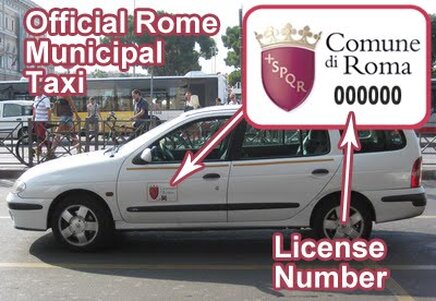
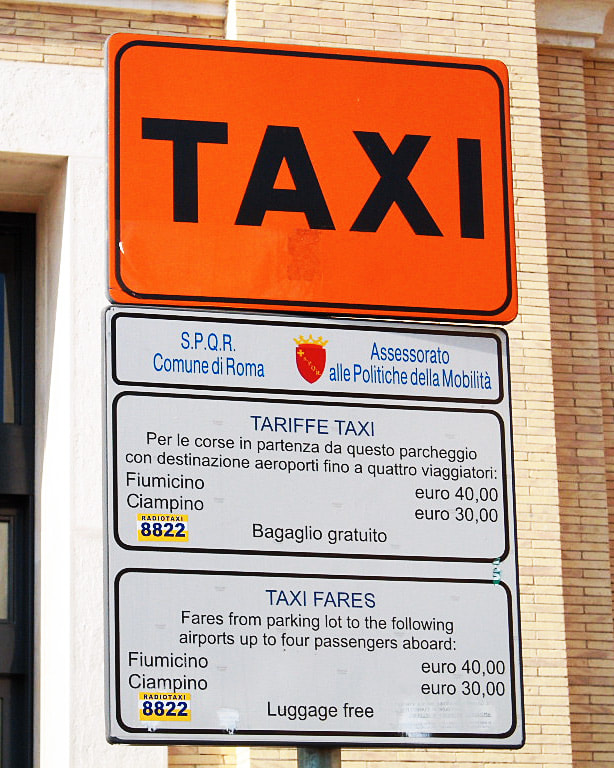
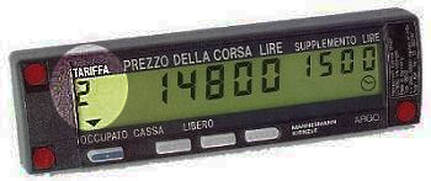





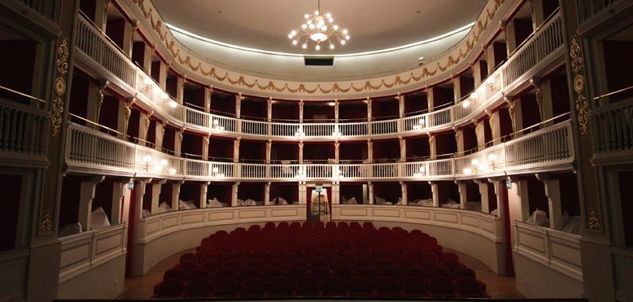










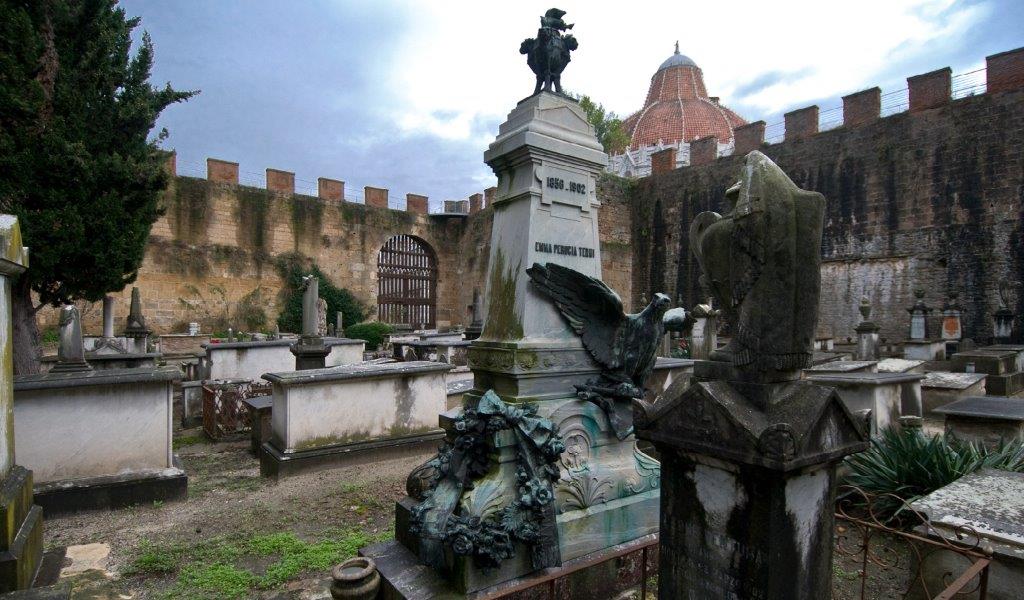










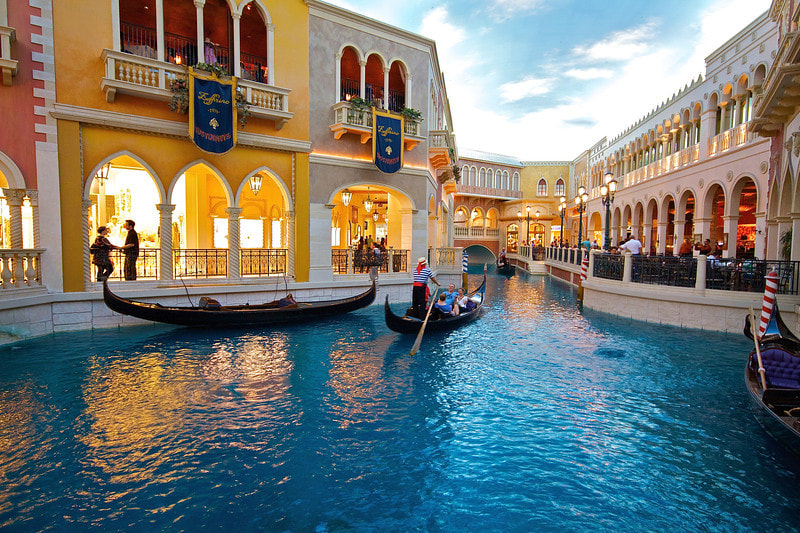





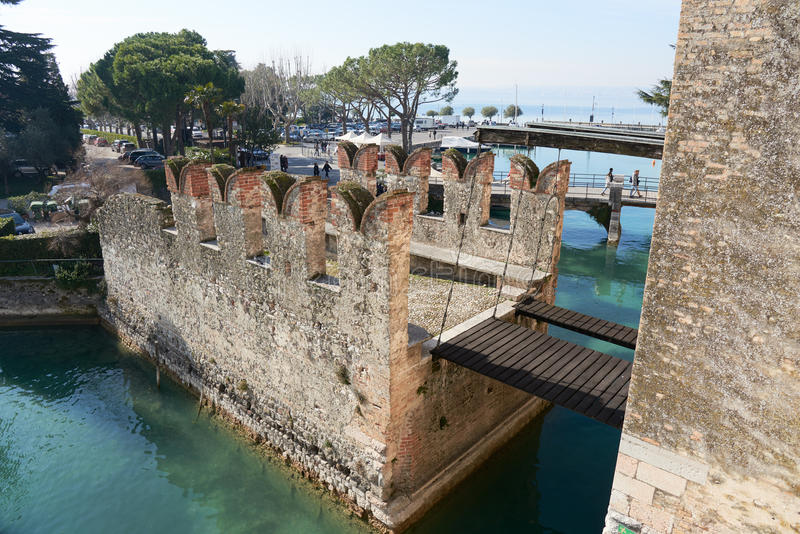

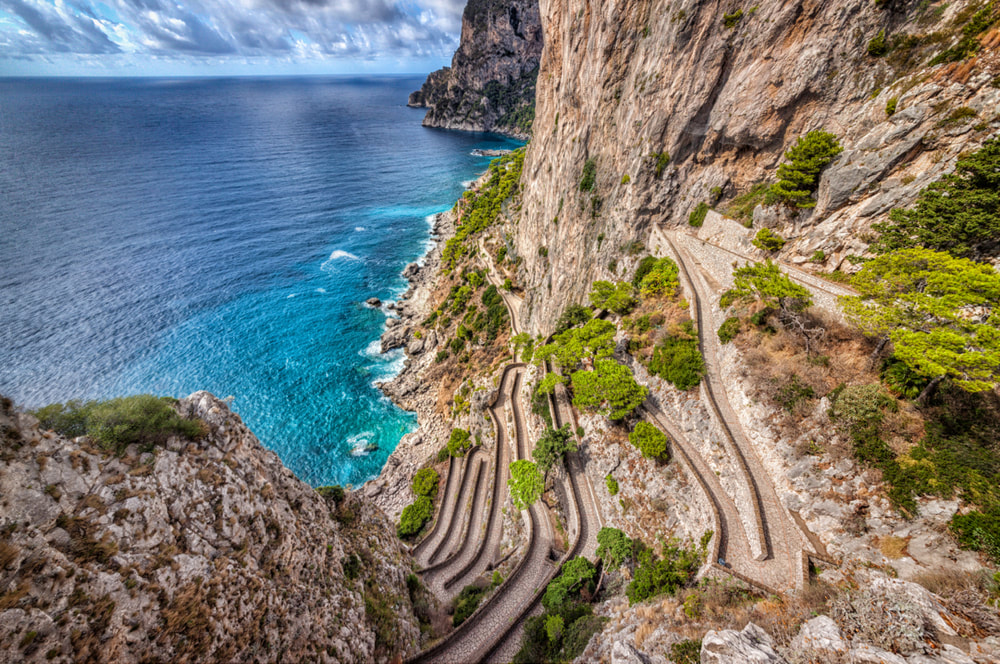



 RSS Feed
RSS Feed
